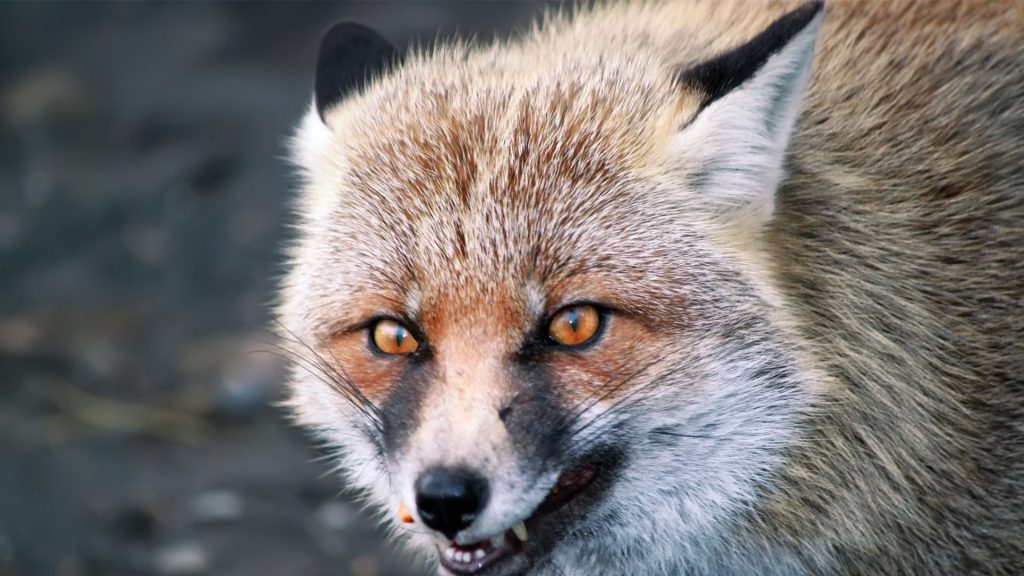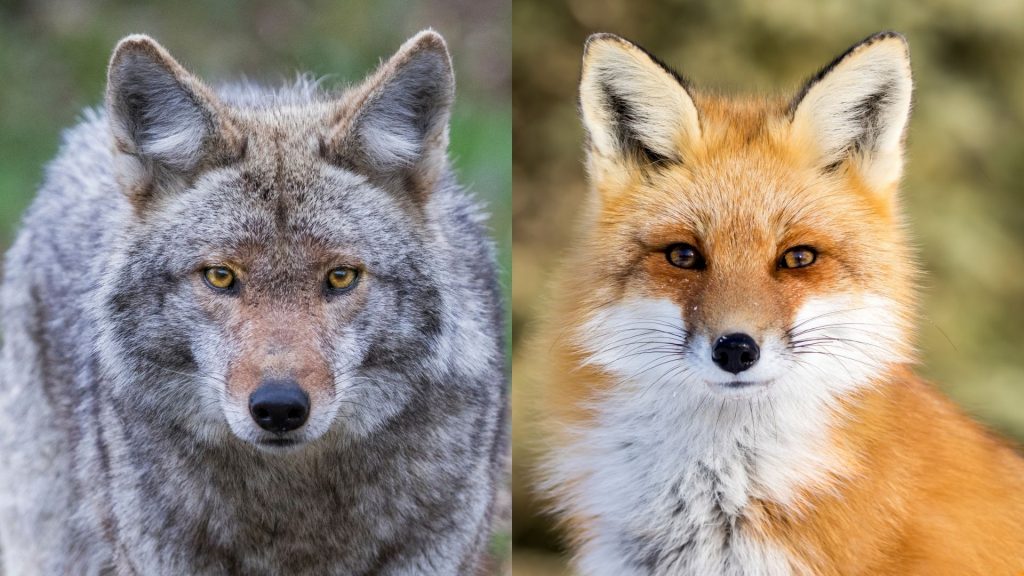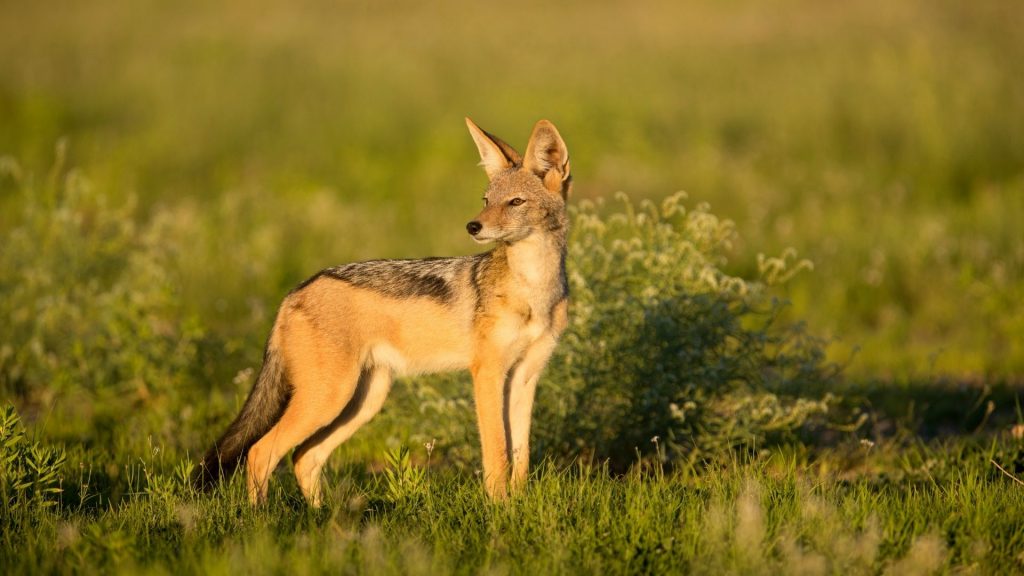It’s not a secret that most people are afraid of encountering foxes. They have that ‘can tear you apart’ look, sending shivers down to your spine.
But are foxes dangerous to humans and pets? In most cases, no. Foxes have a natural fear for humans, so they would rather flee than attack. Although there are some cases of fox attacks on humans, these are pretty rare and happen only when they feel threatened. They also prey only on small pets except for cats and dogs.

However, there are types of foxes that can be pretty dangerous both to humans and pets. Thus, knowing the types of foxes can help you determine if the fox is a real threat or not.
For the list of fox types that could potentially be dangerous to you and your pets, kindly refer to the guide below.
Related: 8 Fox Sounds and Noises and Their Meanings | Information and Facts
Different Types of Foxes That Are Dangerous to Humans

Red Fox (Vulpes Vulpes)
The red fox is the most widely scattered of the canid species. They’re found in almost every Northern region around the globe.
Most of these species have moved further south, ending up in some parts of Africa, Asia, and Central America. These species also have subspecies in Japan, like the red foxes (Vulpes vulpes schrencki).
They can morph into different colors that change each time they lose some of their guard hairs in spring.
These animals feed on small mammals, fruits, and some insects, such as the following:
- Rats
- Mice
- Rabbits
- Hamsters
- Guinea pigs
- Ferrets
- Hedgehogs
- Sugar gliders
- Blackberries
- Apples
- Persimmons
- Crickets
- Beetles
- Caterpillars
- Frogs
This fox species has an average length of 40 to 90 centimeters and can weigh around 2.2 kg to 14 kg.
Bland Ford Fox (Vulpes Cana)
This particular species is a desert fox that lives in Israel, Afghanistan, and other parts of Middle Eastern countries.
They love to make dens in rocky and cliffy regions of highly elevated mountain regions. These foxes have a similar shape to fennec foxes but are a bit bigger.
They have large ears that help them cool off the heat and listen to their prey and predators. These foxes primarily feed on some insects and fruits, such as the following:
- Beetles
- Grasshoppers
- Mice
- Rats
- Locusts
- Lizards
- Birds
They also feed on various fruits such as apples and persimmons. When it comes to size, they have an average length of 43 centimeters and can weigh from 1.5 kg to 3 kg.
Corsac Fox (Vulpes Corsac)
The corsac fox species is a desert fox living in Central Asia and some places in the Middle East. These foxes prefer to make dens in semi-desert places or areas where there are no forests and no human activities.
They’re nocturnal and love to hunt at night. They also prefer to take over other animal’s burrows and turn them into their own dens.
They’re medium in size but smaller than red foxes. They’re also bigger than desert foxes like the fennec fox.
You can identify them with the following distinct features:
- Gray color with tints
- Large ears
- Large, stubby legs
Their diet is inclusive but is not limited to the following:
- Pikas
- Eggs
- Birds
- Ground squirrels
- Jerboas
- Hamsters
- Hares
Their average length is about 45 to 65 centimeters and can weigh around 1.6 kg to 3.2 kg.
Fennec Fox
This fox species is a desert fox commonly found in the deserts of South Africa. They’re the smallest fox species with large ears that enable them to hear their prey and predators from a distance.
They build and live in large dens around dense sand and boulders. Their dens typically have 8-10 openings.
They can adapt well due to their large ears that help cool down their body. These foxes mostly feed on the following:
- Eggs
- Termites
- Lizards
- Birds
- Locusts
- Grasshoppers
- Grass and leaves
Their average length is around 35 to 40 centimeters and can weigh around 0.68 to 1.6 kg.
Arctic Fox (Vulpes Lagoons)
The arctic fox can be found in the arctic regions, including North America, Iceland, Eurasia, and Greenland.
These foxes are monogamous and typically mate for life. Their dens can be found on the sides of cliffs, and they’re among the fox species that don’t hibernate during winter.
You can identify them with the thick furs in the pads of their feet, which helps them not to get frostbite. They have two primary color morphs – the white arctic and the blue arctic.
The white arctic is the most common, while the blue one is gray or brown in color. This species mostly feeds on rodents, such as rats and other small mammals.
Their diet also includes but is not limited to the following:
- Eggs
- Reptiles
- Birds
- Berries
- Amphibians
They’re also very opportunistic and eat whatever is available to them. Furthermore, the average length of a male arctic fox is around 46 to 68 centimeters and 41 to 55 centimeters for females.
Meanwhile, the weight of a male arctic fox is 3.2 to 9.4 kg, while the female is 1.4 to 3.2 kg.
Pale Fox
The pale fox is part of the desert foxes. They live in northern regions of Africa, like Somalia and Sudan.
They can mostly be found in the dune and grasslands of Africa. They usually prefer to live in these areas as they can find some vegetation for their consumption.
These foxes live in units consisting of three family members. They’re small to medium in size and tan in color.
They also have a black ring around their eyes, which separates them from other species. In terms of food, they usually consume the following:
- Rodents
- Lizards
- Insects
- Birds
- Eggs
- Other small mammals
They’re often mistaken for fennec foxes due to the similarity of their colors and the same regions of Africa they’re living in. They have an average length of 43 centimeters and an average weight of 2.8 kg.
Cape Fox (Vulpes Chama)
The Cape fox is also one of the desert foxes found in the Saharan regions of Africa. They’re quite known as the only foxes in Africa that live beneath the equator.
These foxes are gray with salt and pepper tones and prefer to live in semi-desert areas. They’re nocturnal and typically hunt at night separately by gender.
They mate for life and do it every spring. Compare to food; they ensure to store some of the foods they have by burying them for later use.
The Cape fox typically eats fruits and vegetables, inclusive of tubes and roots. They also feed on:
- Birds
- Small reptiles
- Carrion
- Fruits
This fox species has an average length of 53 centimeters and weighs around 3.5 kg.
Bengal Fox (Vulpes Bengalensis)
This fox species is also known as the Indian fox. Bengal foxes commonly live in India, Nepal, and Pakistan.
They prefer to live in semi-desert regions and build their dens underground, having several openings. You can identify them with the following features:
- Pale fur
- Large bushy tails
- Black tips in their tails
- Medium in size
Their diets usually involve but are not limited to the following:
- Small birds
- Eggs
- Reptiles
- Insects
- Fruits
- Field mice
The Bengal fox has an average length of 52 centimeters, with an average weight of 2.4 kg.
These are only a small part of the entire fox species. There are more species to tackle, but before that, below are the answers to some frequently asked questions about foxes.
Frequently Asked Questions About Foxes

Are Red Foxes Dangerous?
Red foxes aren’t dangerous except when they’re mad. They can be friendly too, but always remember that these are wild animals.
They can be unpredictable and regress into their wild nature whenever they feel threatened. Thus, it’s best not to approach these wild animals to ensure your safety.
Are Fennec Foxes Dangerous?
Fennec foxes are also not dangerous. However, they can’t be tamed either.
These foxes can get aggressive in their territory, especially during mating season, so it’s best not to approach them.
Are Urban Foxes Dangerous?
Urban foxes aren’t that dangerous since they attack rarely. In fact, other dogs have higher risks than urban foxes.
Though they can pose a small threat to your cats, these are also rare circumstances. This is because foxes tend to back away, knowing they could be in potential danger.
Are Gray Foxes Dangerous?
Gray foxes aren’t dangerous to humans. They prefer to live in less populated areas, like near the swamps and dense woodlands.
These species are more aggressive compared to red foxes, and they stay away from humans as much as possible. Thus, the gray foxes are deemed as not dangerous to humans.
Are Arctic Foxes Dangerous?
Arctic foxes can potentially be dangerous. This is because they live in solitary places, and it’s not often they see humans where they live.
These foxes are known to have cheeky behaviors, so it’s best to avoid them at all costs. They’re also known to feed on whatever they see due to the scarcity of food.
Are Baby Foxes Dangerous?
Baby foxes aren’t inherently dangerous. However, if you happen to stay close to their dens, the grown foxes can cause potential dangers to you.
Foxes are known to be protective of their young, so it’s better not to stay within the range of their dens.
Foxes and Our Pets

Are Foxes Dangerous to Dogs?
Foxes aren’t dangerous to dogs. They don’t see dogs as potential prey, so they’re safe. However, a potential collision can happen if one will chase the other.
Are Foxes Dangerous to Cats?
Foxes also don’t see cats as prey. However, they can target their kittens if given the opportunity.
Are There Any Pets That Foxes Get Along With?
Foxes can potentially get along with cats and dogs as they don’t see them as prey. However, they can still hurt one another if any of them is rabid.
Foxes and Their Excrement: Is It Toxic and Dangerous?

Is Fox Poo Dangerous?
Yes, fox poo can be dangerous. This is because the feces of these animals have roundworm parasites that can cause a rare infection called “toxocariasis” to young children.
Is Fox Urine Dangerous?
The fox urine is potentially dangerous to dogs. The fox urine contains bacteria that can damage the liver and kidneys of dogs.
The urine can also infect humans through contaminated water, which is called “Weil’s disease.” This disease is a form of bacterial infection caught by humans through fox urine.
Interesting Things About Foxes
- Foxes have an impressive hearing.
- Foxes are nocturnal.
- Foxes stay in underground dens.
- Foxes are stinky.
- Foxes like to be in solitary.
- Foxes can make 40 varied sounds.
Is a Fox or Coyote More Dangerous?

Coyotes are far more dangerous than foxes. They’re twice as big as the average fox and prey on larger farm animals.
It’s been said that it’s better to get close to a fox than a coyote since they can literally attack you out of nowhere.
Related: How to Keep Coyotes Away? | The Effective Guide
Is a Cornered Fox More Dangerous Than a Jackal?

A cornered fox is definitely more threatening than a jackal. This is because a cornered fox can get rabid when they sense that they’re being threatened.
On the other hand, a jackal can act like a dog but never allow anyone to pet them. Thus, for your own safety, it’s best to stay away from these two animals as much as possible.
Summary
Generally, foxes aren’t a threat to humans and pets, such as dogs and cats. However, if you’ve got a hamster as a pet or other small pet mammals, make sure that they’re indoors.
Foxes are known to hunt on small prey like hamsters and guinea pigs. They also feed on birds, eggs, various fruits, and plants.
Although these animals aren’t generally harmful to humans, it’s still ideal for keeping your distance from them as they’re still wild animals. Never try to approach them or make them feel threatened, as they can get rabid and could potentially hurt you or your pets.
List of Sources
Urban Foxes. NSW Government: Department of Primary Industries.
Red Fox. SUNY College of Environmental Science and Forestry.
Vulpes Bengalensis. ITIS – Integrated Taxonomic Information System – Report.
Fennec Fox. Smithsonian’s National Zoo and Conservation Biology Institute.
Toxocariasis FAQs. Centers for Disease Control and Prevention.
- How to Get Rid of Copperheads | Practical Guide - August 27, 2023
- How to Get Rid of Corn Snakes | What Makes Them Aggressive? - August 27, 2023
- How to Get Rid of Alligators | Safety Measures and Removal Methods - July 16, 2023
